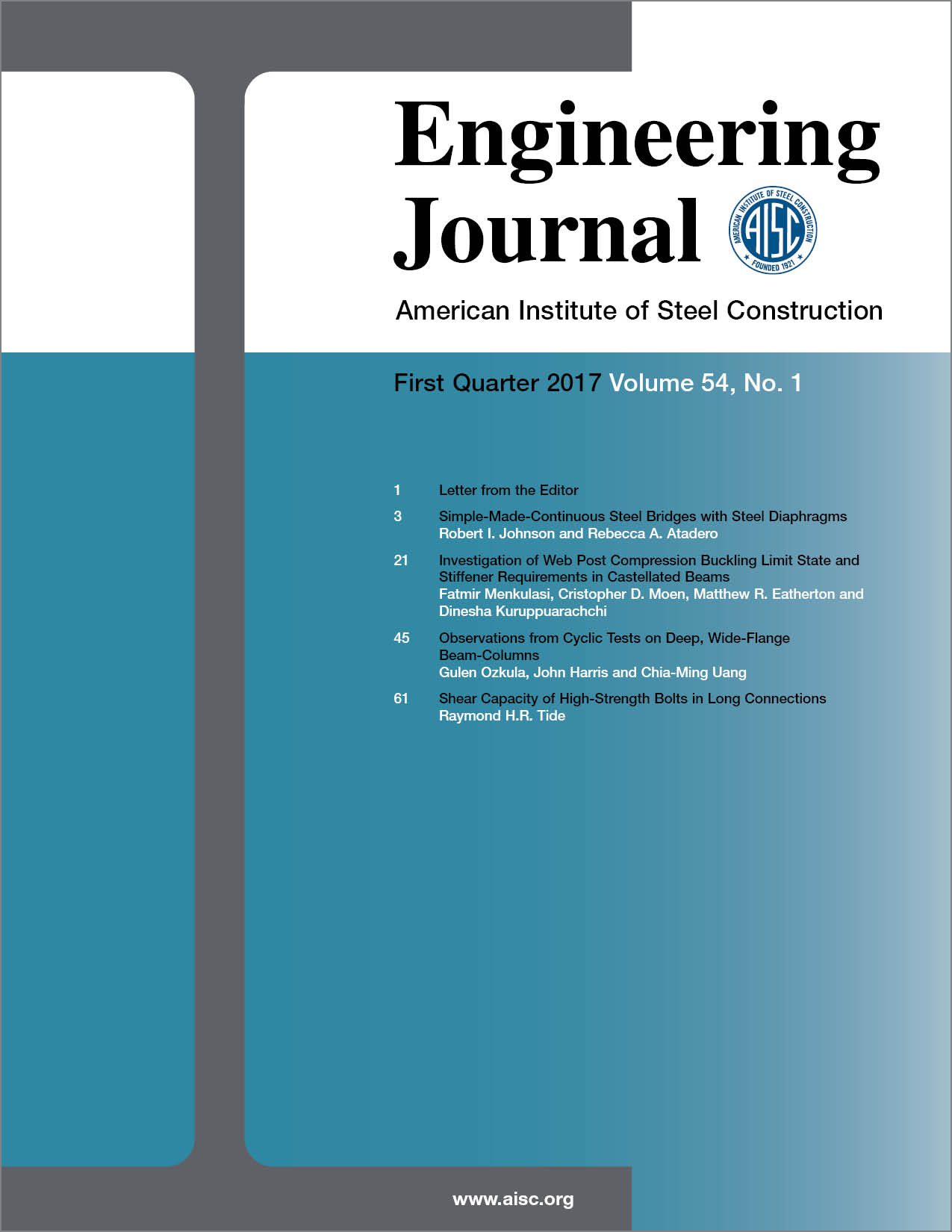Observations from Cyclic Tests on Deep, Wide-Flange Beam-Columns
DOI:
https://doi.org/10.62913/engj.v54i1.1109Keywords:
beam-column, cyclic behavior, plastic rotation, local buckling, lateral-torsional bucklingAbstract
As part of a National Institute of Standards and Technology (NIST) comprehensive research program to study the seismic behavior and design of deep, wide-flange structural steel beam-column members for application in seismic design and construction of steel special moment frames, 25 deep column specimens were subjected to inelastic cyclic loading with three different levels of constant compression axial load (Ca = 0.2, 0.4 and 0.6). The test matrix included five W24 sections (W24×55 to W24×176) to cover a wide range of element slenderness ratios for flange and web local buckling and member slenderness ratios for lateral-torsional buckling and weak-axis flexural buckling. The specimens satisfied AISC 341 requirements for highly or moderately ductile elements. All specimens were subjected to strong-axis bending, except for three specimens that were subjected to weak-axis bending and one specimen that was subjected to biaxial bending. Test results showed that the slenderness ratios had a significant effect on the failure mode—local versus global buckling. The presence of an axial load produced significant local buckling and axial shortening. The level of axial load also affected the plastic rotation capacity. Specimens with weak-axis bending were ductile, showing no local buckling up to a high story-drift ratio. Most of the strong-axis bending specimens were not able to deliver a plastic rotation of 0.03 radian.

